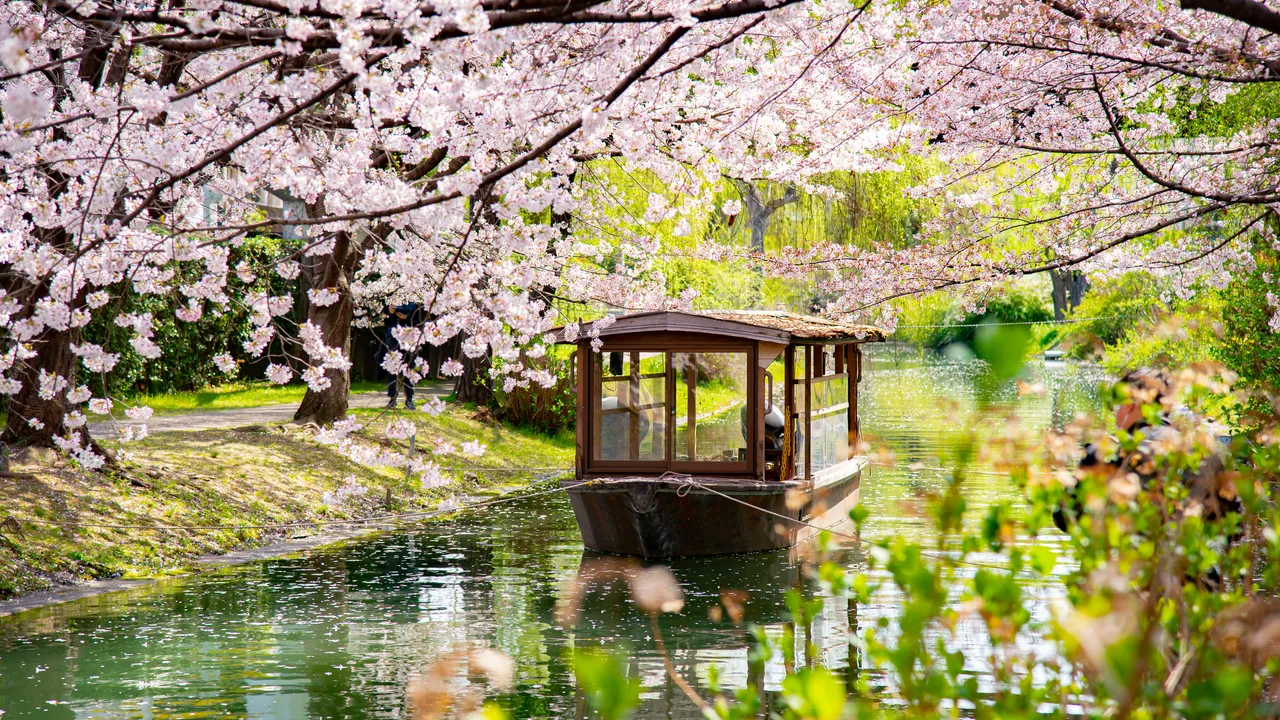Activities That Harm Scotland’s Peatlands and Rainforests: Threats and Solutions
Estimated Read Time: 10 Minutes
Scotland’s peatlands and temperate rainforests are ecological treasures, vital for carbon storage, biodiversity, and climate resilience. Peatlands, covering 20% of Scotland’s land, store nearly 3,000 million tonnes of carbon, while the rare Atlantic rainforests, found along the west coast, host unique lichens and mosses found nowhere else. Yet, these ecosystems face severe threats from human activities, including drainage, afforestation, overgrazing, peat extraction, and invasive species introduction. These practices degrade habitats, release stored carbon, and undermine Scotland’s net-zero goal by 2045. Drawing on insights from Forestry and Land Scotland (FLS), NatureScot, and the Alliance for Scotland’s Rainforest, this 2,000-word guide explores the key activities harming Scotland’s peatlands and rainforests, their impacts, and the innovative solutions—often tech-driven—being deployed to reverse the damage. From drone surveillance to community-led restoration, we uncover how Scotland is fighting to protect these critical landscapes.
Understanding Scotland’s Peatlands and Rainforests
Peatlands are wetland ecosystems where waterlogged conditions slow decomposition, forming peat from sphagnum mosses and other plants. Scotland’s blanket bogs, a type of peatland, are globally significant, holding 64% of the UK’s soil carbon, as per NatureScot. They support species like golden plovers and sundew plants while regulating water flow to prevent flooding.
Temperate Rainforests, or Celtic woodlands, thrive in Scotland’s wet, mild “hyper-oceanic zone,” covering just 30,000 hectares. These lush forests, rich with oaks, hazels, and over 200 bryophyte species, are rarer than tropical rainforests, per Plantlife. They sequester carbon and shelter rare wildlife like pine martens and chequered skippers.
Despite their value, 80% of Scotland’s peatlands and half of its rainforests are degraded, largely due to human activities. Below, we detail the primary threats, their consequences, and the restoration efforts giving these ecosystems a fighting chance.
Activities Harming Peatlands and Rainforests
1. Drainage for Agriculture and Forestry
Impact on Peatlands: Post-World War II policies encouraged draining peatlands to create farmland or plant conifers, particularly Sitka spruce. Drainage channels, or “grips,” lower water tables, drying peat and exposing it to oxygen, which triggers decomposition and releases stored carbon. RSPB estimates drained peatlands emit 22 million tonnes of CO2 annually in the UK, equivalent to 5% of emissions.
Impact on Rainforests: Drainage for forestry plantations, especially on Plantations on Ancient Woodland Sites (PAWS), disrupts rainforest hydrology, reducing moisture needed for bryophytes and lichens. This affects 17,000 hectares of potential rainforest sites, per FLS.
Solutions: FLS’s Peatland Action programme, funded by £65 million from the Scottish Government, restored 10,360 hectares in 2023–24 using peat dams to block drains and raise water tables. Techniques like “stump flipping and ground smoothing” level furrows from past ploughing, as seen at Craggie, where sphagnum mosses returned within three years. For rainforests, FLS removes conifers and replants native species, with 1,200 hectares recovering since 2009.
2. Afforestation with Non-Native Conifers
Impact on Peatlands: From the 1950s to 1980s, conifers were planted on peatlands to boost timber production, covering 250,000 hectares. These “forest to bog” sites, like Gow Moss, disrupt peat formation by shading mosses and drying soil through transpiration. Forestry Journal notes that such plantations release carbon as roots penetrate deep peat.
Impact on Rainforests: Conifer plantations on PAWS, covering 40% of rainforest sites, replace native broadleaves, reducing biodiversity. Non-native trees like spruce outcompete lichens, as seen in Knapdale before restoration.
Solutions: FLS’s “forest to bog” restoration removes conifers and rewets sites, with 1,000 hectares treated in 2023–24. Drones and LiDAR map sites for precision, as in Derryclare, Ireland, where FLS shared techniques with Coillte Nature. For rainforests, FLS restores native woodlands, with 250 hectares safeguarded in 2023–24. The Alliance for Scotland’s Rainforest supports landscape-scale projects in Argyll, funded by £10 million since 2023.
3. Overgrazing by Deer and Livestock
Impact on Peatlands: Deer and sheep overgrazing, affecting 40% of peatlands, eat young plants and trample mosses, preventing regeneration. NatureScot reports that high deer densities (15–20 per km² in some areas) compacts peat, reducing water retention.
Impact on Rainforests: Overgrazing stunts tree growth, with 40% of rainforest sites impacted. Deer browse saplings, threatening oaks and hazels, as seen in Balmacara before fencing.
Solutions: FLS uses thermal imaging drones and GPS collars for targeted deer culls, achieving a 13% increase in 2023–24. The Forestry Grant Scheme funds deer fencing and community larders, protecting 1,140 hectares in East Loch Lomond. For 2025, AI-driven deer tracking will optimize culls, supporting the Scottish Biodiversity Strategy. Volunteers plant 2.2 million native seeds annually, ensuring resilient regrowth.
4. Peat Extraction for Horticulture and Fuel
Impact on Peatlands: Commercial peat extraction, historically for gardening and fuel, removes surface layers, destroying habitats and releasing carbon. IUCN UK Peatland Programme estimates 3,000 hectares are still cut annually in the UK, though Scotland banned commercial extraction in 2021. Illegal cutting persists in some areas.
Impact on Rainforests: While less directly affected, peat extraction near rainforests disrupts hydrology, drying adjacent woodlands and harming moisture-dependent lichens.
Solutions: Scotland’s ban, enforced by SEPA, promotes peat-free alternatives like coir, with retailers like B&Q complying. Restoration projects, like Bord na Móna’s 7,273 hectares in Ireland, inspire FLS to rehabilitate cutover bogs. Community campaigns, such as the Bog of Allen Nature Centre, raise awareness, while FLS monitors illegal cutting with drones.
5. Invasive Species: Rhododendron ponticum
Impact on Peatlands: Though less common, rhododendron invades wetter bogs, shading mosses and altering soil chemistry. Its spread in Cowal threatens restoration gains.
Impact on Rainforests: Rhododendron ponticum, introduced in the 1700s, chokes 50% of rainforest sites, outcompeting native plants and killing lichens. Plantlife notes its seeds spread up to 100 meters, complicating control.
Solutions: FLS treated 930 hectares of rhododendron in 2023–24 using drones to map infestations and stem injection to deliver herbicide precisely, minimizing runoff. In 2025, FLS will train 50 contractors in stem injection, backed by £5 million, while the Alliance’s #PonticumProblem campaign on X encourages public reporting. In Glencripesdale, drone-guided clearance restored 200 hectares.
6. Climate Change and Pollution
Impact on Peatlands: Warming temperatures and erratic rainfall dry peatlands, increasing decomposition and wildfire risk. Nitrogen deposition from pollution inhibits sphagnum growth, affecting 30% of bogs, per RSPB.
Impact on Rainforests: Climate change shrinks the hyper-oceanic zone, while diseases like ash dieback threaten native trees. Air pollution reduces lichen diversity, a key rainforest indicator.
Solutions: FLS plants climate-resilient species like Scots pine and birch, with 1.5 million trees grown from 2024 seed collections. The Flow Country, a UNESCO World Heritage Site, uses hydrological sensors to monitor climate impacts, guiding adaptive restoration. For rainforests, the Alliance’s 2025 AI models will predict habitat shifts, informing replanting.
7. Historical Land Management and Lack of Awareness
Impact on Peatlands and Rainforests: Centuries of mismanagement, driven by economic priorities, ignored ecological value. Lack of public awareness perpetuated practices like burning for grouse moors, damaging 10% of peatlands. Scotlink notes that cultural disconnect hindered conservation until recently.
Solutions: FLS and NatureScot’s outreach, including virtual tours and school programs, educates communities. The Peatland ACTION website (peatlandaction.scot) and Alliance’s mapping app engage citizens, with 2024 volunteers mapping 500 potential rainforest sites. In 2025, a joint citizen science platform will integrate drone data, fostering stewardship.
Consequences of Harmful Activities
These activities have profound impacts:
- Carbon Emissions: Degraded peatlands emit 22 million tonnes of CO2 annually, undermining net-zero goals. Rainforest loss reduces sequestration by 1MTCO2e yearly.
- Biodiversity Loss: 11% of Scotland’s species, including marsh fritillaries and epiphytic lichens, are at risk, per Scotlink.
- Flooding and Water Quality: Drained peatlands increase flood risks, costing £20 million annually in damages, while polluted runoff raises water treatment costs.
- Cultural Loss: Peatlands and rainforests are part of Scotland’s heritage, and their loss erodes community identity, as noted by Argyll Trust.
Technological Solutions: A Path to Recovery
Technology is central to restoration, enabling scale and precision:
- Drones and LiDAR: Map rhododendron and drainage, guiding interventions. FLS’s 2023–24 surveys covered 11,000 hectares, with 2025 AI integration to predict spread.
- Stem Injection: Kills rhododendron without harming mosses, scaling in 2025 with £5 million funding.
- Low-Pressure Excavators: Install peat dams and smooth ground, restoring 10,360 hectares in 2023–24.
- Smart Sensors: Monitor hydrology, as in Ireland’s WaterLANDS, with FLS piloting in the Flow Country.
- Digital Apps: The Alliance’s mapping tool and FLS’s citizen science platform (2025 launch) engage communities, collecting 2.2 million seeds in 2024.
These tools, backed by £65 million for peatlands and £10 million for rainforests, drive measurable progress, with 1,200 rainforest hectares and 10,360 peatland hectares recovering.
Community and Economic Benefits
Restoration creates 350 jobs annually in Scotland, supporting rural economies, as seen in Bord na Móna’s Irish model. Community projects, like WaterLANDS’ 150 farmers in Leitrim, foster ownership. Educational campaigns, including FLS’s peatlandaction.scot and the Alliance’s #RainforestRestoration, build public support, with 2025 plans for AR tours and school kits.
Challenges and 2025 Outlook
Challenges include:
- Funding: £20 million annually is needed to meet 3,000-hectare peatland and 5,000-hectare rainforest targets by 2030.
- Climate Uncertainty: Adaptive strategies must counter warming and disease.
- Scale: Training contractors and engaging landowners are critical.
In 2025, FLS and the Alliance will:
- Scale AI for predictive modeling.
- Train 50+ contractors for stem injection and dam installation.
- Launch a unified citizen science app.
- Advocate for increased funding via the Nature Restoration Fund.
Why It Matters
Peatlands and rainforests are climate and biodiversity linchpins, supporting Scotland’s net-zero and UN biodiversity goals. Restoration delivers economic benefits, from flood prevention to jobs, while preserving cultural heritage. As Positive News notes, Scotland’s efforts inspire global action, with lessons for degraded ecosystems worldwide.
Final Thoughts
Activities like drainage, afforestation, and peat extraction have harmed Scotland’s peatlands and rainforests, but technology and collaboration are turning the tide. Drones, LiDAR, stem injection, and community apps are restoring 11,000 hectares, with 2025 poised for greater impact. Join FLS at peatlandaction.scot or the Alliance at scotlandsrainforest.org to map, volunteer, or advocate. Scotland’s peatlands and rainforests—carbon sinks, wildlife havens, and cultural gems—deserve our protection. Let’s give them the breathing room to thrive.





Leave a Reply